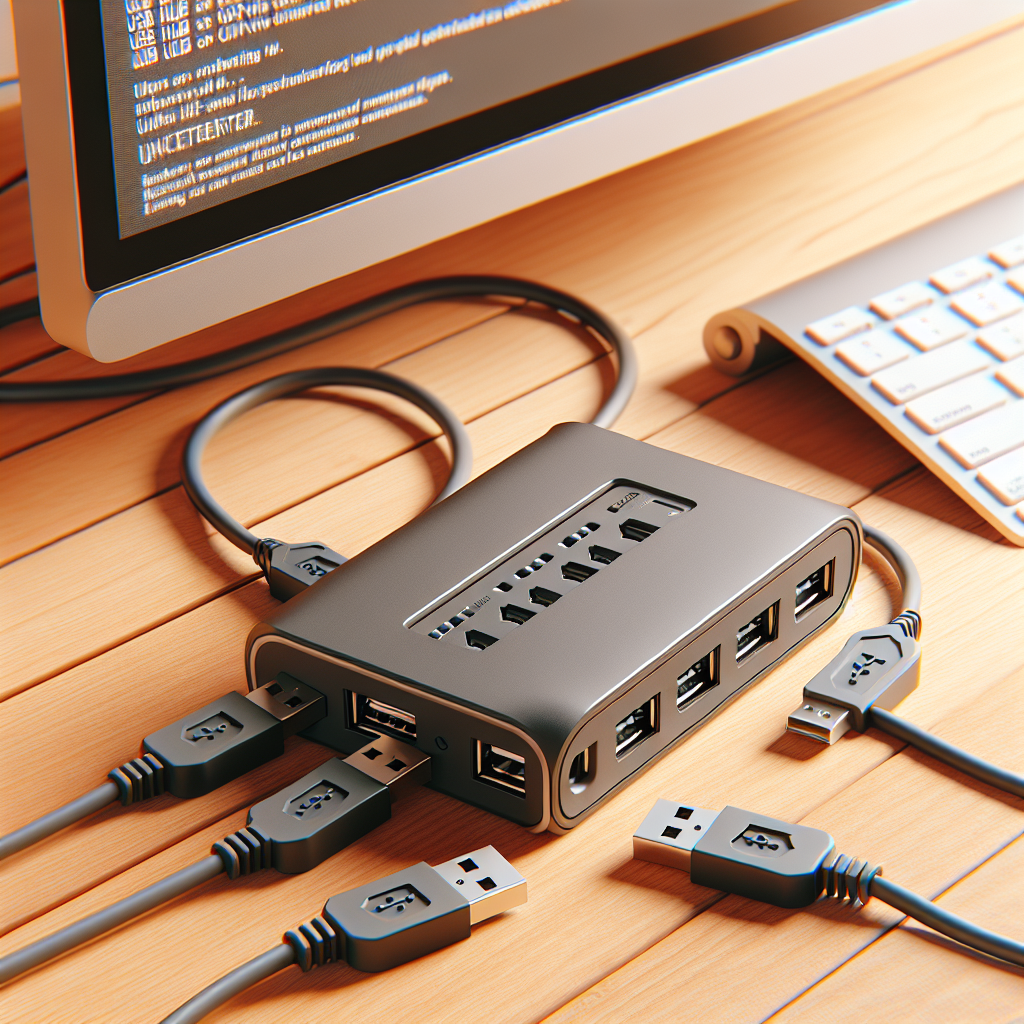USB hubs are essential devices for expanding the number of USB ports available on your computer, enabling you to connect multiple devices simultaneously. However, like any technology, they can sometimes fail, causing frustration. If your USB hub stops working, it’s important to understand the potential causes and effective solutions. This guide will walk you through troubleshooting steps and maintenance tips to get your USB hub back in working order.
| Symptoms | Possible Causes | Suggested Solutions |
|---|---|---|
| Devices not recognized | Hub is disconnected or power issue | Reconnect hub and check power supply |
| No power to devices | Faulty USB hub or ports | Test with other USB devices |
| Intermittent disconnections | Cable issues | Inspect and replace cables if necessary |
| Slow data transfer | Insufficient power to hub | Use powered USB hub |
Common Causes of USB Hub Failures
Understanding the possible causes of USB hub failures can help you diagnose the issue more quickly. Here’s a breakdown of the most common reasons for a USB hub to stop working:
- Power Supply Issues: Many USB hubs require external power sources for optimal performance, especially when multiple devices are connected.
- Faulty USB Ports: Sometimes, the USB port on the computer may be malfunctioning, leading to connectivity issues.
- Driver Conflicts: Outdated or corrupted drivers can prevent the USB hub from functioning properly.
- Physical Damage: Wear and tear, as well as accidental physical damage, can cause a hub to fail.
- Overloading the Hub: Connecting too many devices can exceed the hub’s capacity, leading to failures.
Troubleshooting Steps
If your USB hub has stopped working, follow these troubleshooting steps to identify and resolve the issue:
1. Check Connections
The first step in troubleshooting a malfunctioning USB hub is to check all connections:
- Ensure the USB hub is securely connected to the computer.
- Check the power adapter (if applicable) and ensure it is plugged in.
- Inspect all USB cables for signs of damage.
2. Restart Your Computer
Sometimes, a simple restart can resolve connectivity issues. Restart your computer and see if the USB hub starts functioning again.
3. Test the Hub on Another Computer
To determine whether the issue lies with the hub or the original computer:
- Connect the USB hub to a different computer.
- If the hub works on the other computer, the issue may be with the original computer’s USB ports or settings.
4. Test Multiple Devices
If possible, connect different USB devices to the hub:
- This will help you determine if the problem is with the hub or a specific device.
- If none of the devices are recognized, it’s likely an issue with the hub itself.
5. Update Drivers
Outdated or corrupted drivers can lead to USB hub malfunctions:
- Right-click on ‘This PC’ or ‘My Computer’ and select ‘Manage’.
- Go to ‘Device Manager’ and find your USB hub under ‘Universal Serial Bus controllers’.
- Right-click and select ‘Update driver’.
6. Check Power Supply
If you’re using a powered USB hub:
- Ensure that the power adapter is functioning.
- Look for a power LED indicator on the hub.
- Consider testing with a different power adapter if available.
7. Inspect for Hardware Issues
Physical damage can also affect the functionality of your USB hub:
- Look for any visible signs of wear, such as frayed cables or broken connectors.
- Check for obstructions in the USB ports.
Advanced Solutions
If basic troubleshooting fails, consider these advanced options:
1. Uninstall and Reinstall USB Controllers
Sometimes, reinstalling USB controllers can resolve conflicts:
- In Device Manager, expand ‘Universal Serial Bus controllers’.
- Right-click each entry and select ‘Uninstall device’.
- Restart your computer, which will automatically reinstall the controllers.
2. Disable Selective Suspend
The Selective Suspend feature can lead to malfunctioning ports:
- Go to ‘Control Panel’ > ‘Power Options’.
- Select ‘Change plan settings’ next to your current power plan.
- Click on ‘Change advanced power settings’.
- In the USB settings, set ‘USB selective suspend setting’ to ‘Disabled’.
3. Reset BIOS
In rare cases, resetting your BIOS can resolve USB issues:
- Restart your computer and enter BIOS setup (usually by pressing Del, F2, or F10).
- Find the option to reset BIOS to default settings.
- Save changes and exit BIOS.
Preventive Measures
To avoid future issues with your USB hub, consider these preventive measures:
- Choose Quality Products: Invest in a reliable, high-quality USB hub from a reputable manufacturer.
- Regular Maintenance: Periodically inspect and clean USB ports and cables to prevent dust buildup.
- Limit Device Connections: Avoid connecting too many devices at once, particularly with unpowered hubs.
- Update Drivers: Regularly check for and install updates for your USB drivers.
Conclusion
A malfunctioning USB hub can be frustrating, but many issues can be diagnosed and resolved through basic troubleshooting steps. By understanding the common causes of USB hub failures and following these guidelines, you can restore functionality and enhance the longevity of your USB hub. Remember to take preventive measures to avoid future problems and ensure smooth operation for all your USB devices.

